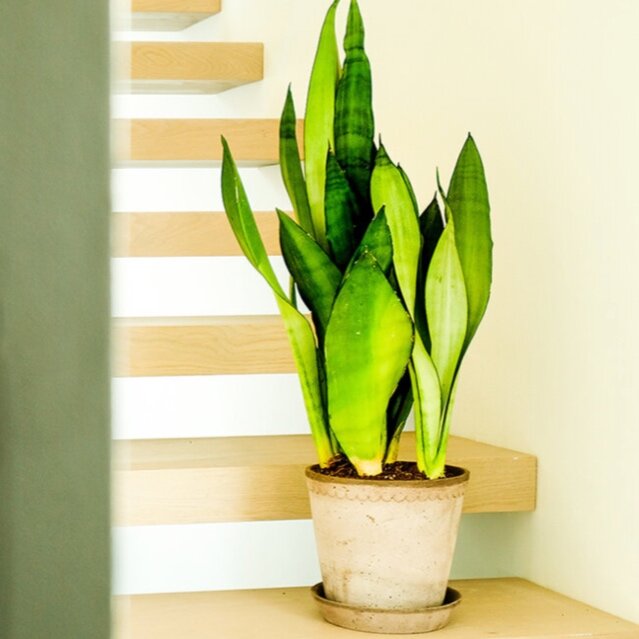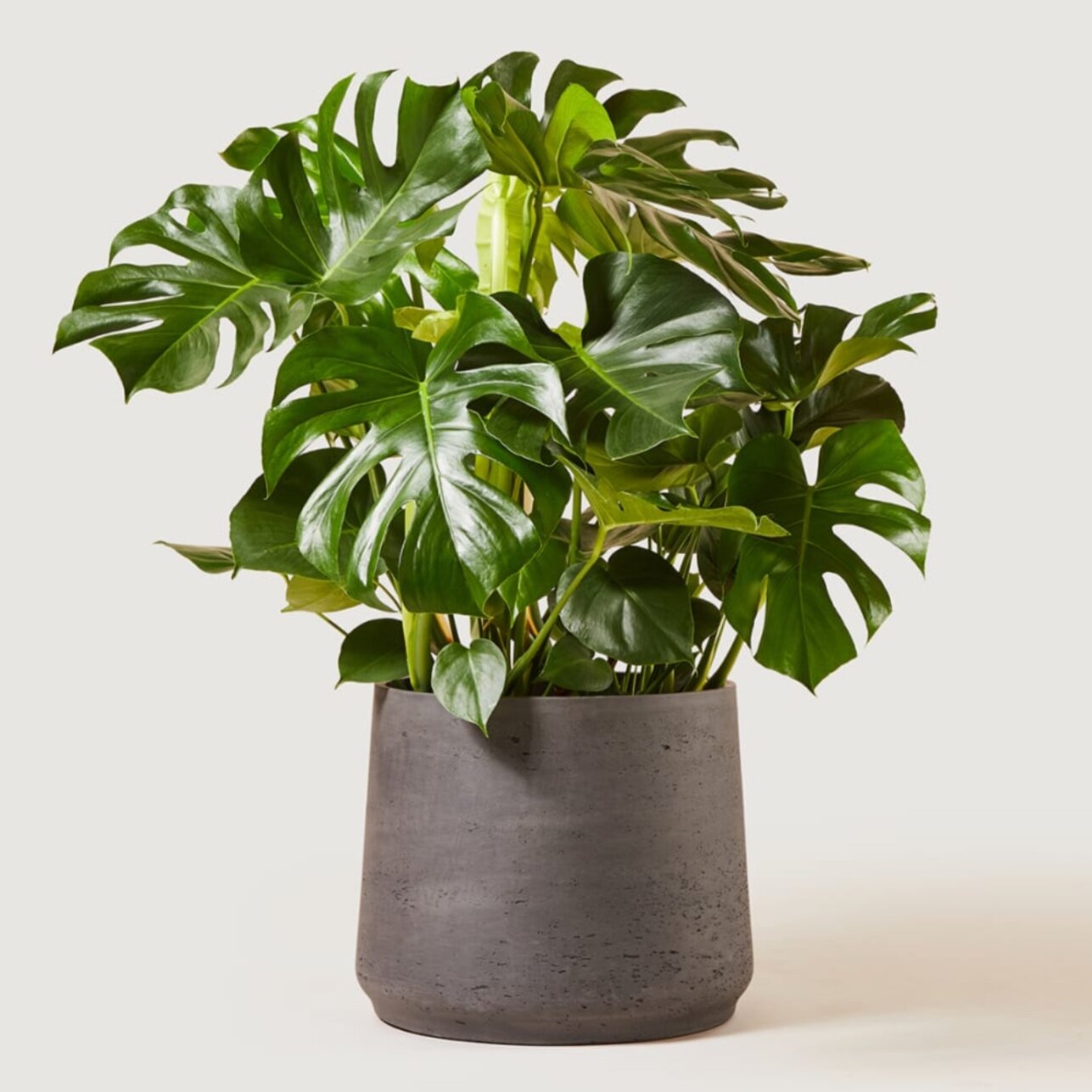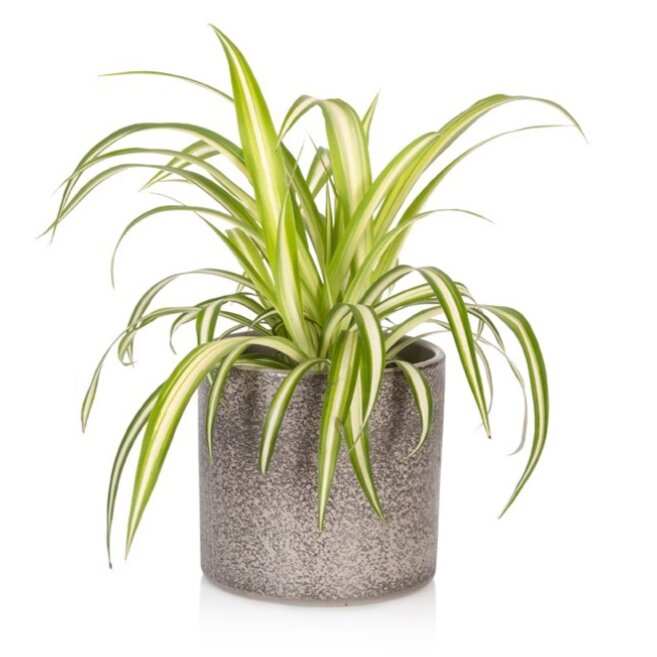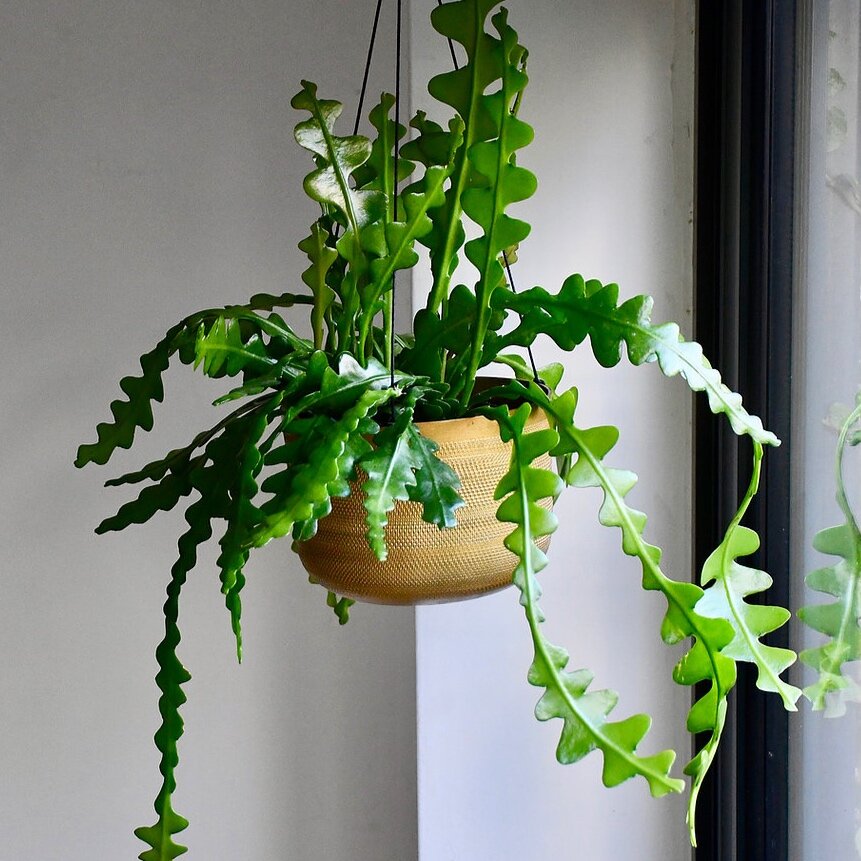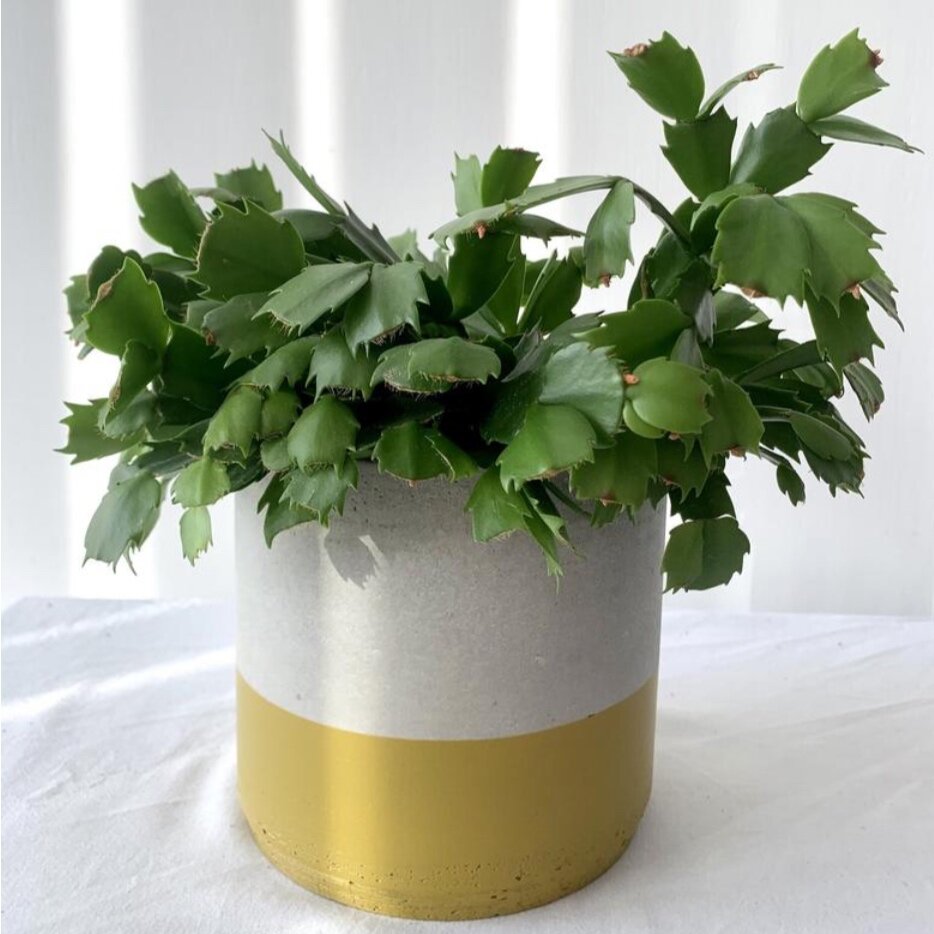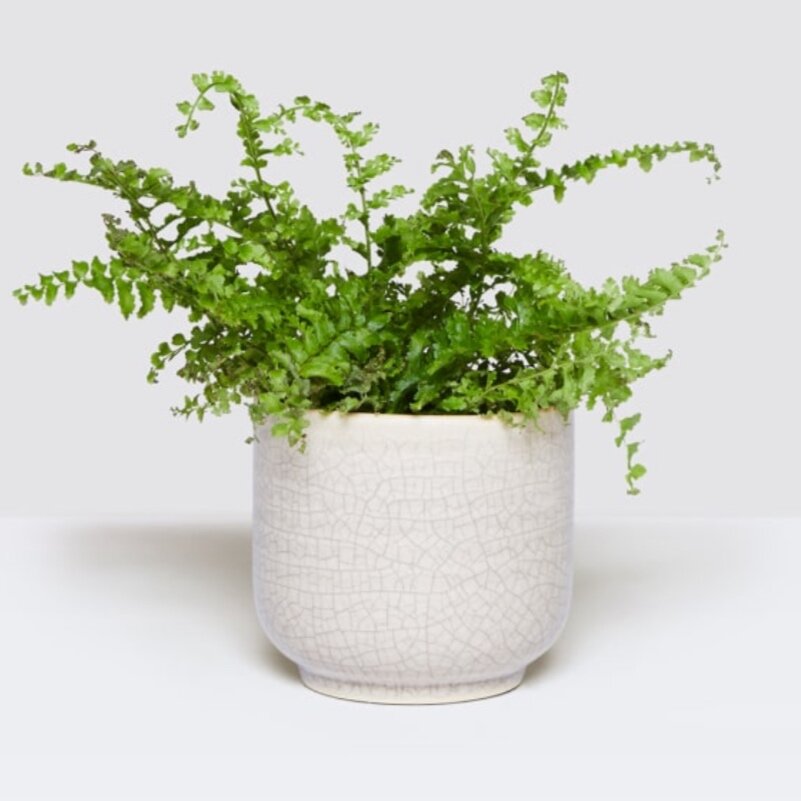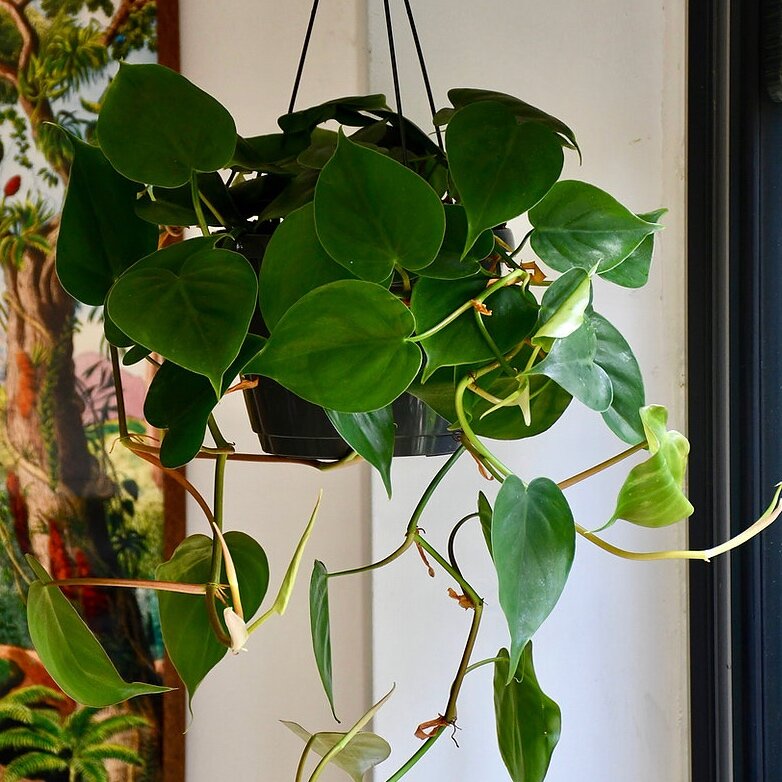Why Plants Make People Happy & Ten Excellent Houseplants For A Novice
I have a terrible history with houseplants. When I first moved in with Joe back in 1999, my house was a plant free zone, not a hanging basket nor potted palm in sight. I would go as far as to say I was almost anti houseplant and despite the attempts of my Mum to interest me in the ways of the green fingered, I was simply incapable of keeping anything even vaguely leafy alive. This was purely due to the fact that I didn't have the time or inclination to look after anything aside from myself - I worked in London, leaving early and returning late and the only thing that was an essential activity upon my arrival home each evening was locating the wine bottle and the opening of a packet of crisps. My mum persisted, bombarding me every December with the only greenery that I couldn’t kill, a poinsettia, a plant that would survive a nuclear fall out with no ill effect and whose bright red leaves made my eyes bleed. It would sit in the corner of the kitchen, unwatered and untended, yet irritatingly still alive and kicking at the end of March. Even today, I have an irrational dislike of these poor Christmas plants and dread being gifted one by visitors, ‘sharing the love’ immediately by passing them on to friends the next time I’m a visitor myself.
Miracles DO happen. My dining room and my massive Monsteras.
However, as time has gone on, my interest in the world of plants has grown (no pun intended) and it’s safe to say that there is now no room in my home that isn’t adorned with some sort of foliage. Since we moved into our house almost six years ago, I’ve gradually increased my collection of green stuff, starting small with a Monstera that now towers over five feet and survives despite my lacklustre care. I have around 50 plants that I regularly repot, although my watering regime is more of the ‘when I remember or they look as if they are about to fall over’ style than an efficient routine, but over the last few years, the death rate has fallen and I’ve even started propagating, a word that I wouldn’t even have been able to give you the definition of until recently. It’s a great way to make the most of the plants you have - taking cuttings and propping them in tubes of water so that they can grow roots for potting (if you are interested in trying this then Shell On Earth have well priced propagation stations that are perfect for this purpose). The abundance of greenery in my house truly brings me joy and I am forever popping to my local garden centre to check out any newness to add to my collection.
So what is it about plants that makes us feel happy? Research has proven that having a plant in your workspace improves concentration and productivity by up to 15% and can also reduce our stress levels. Dr Laura Jenkins is the founder of HousePlantHouse, a dedicated platform for houseplant enthusiasts with regular posts ranging from specific plant care to interior decor and plant styling. Laura confirms these stats. ‘The influx of indoor greenery certainly has positive benefits — plants actually do reduce stress and promote well-being, mindfulness and self-care. From a styling perspective, plants add a sculptural, viridescent dimension to any space and to me, they just make a place feel like home’. As the curator of the #realhouseplantsofinstagram hashtag, Laura is passionate about encouraging everyone to bring a little bit of green into their homes so that they can share in the enjoyment and mindfulness that caring for plants can bring. She’s also the founder of #onwednesdaysweplantpink, a rapidly growing hashtag for plant enthusiasts to share the pink horticultural love, perfect if you are looking for inspiration for your own home. Laura also recommends making the most of what you have. ‘If you don’t have lots of space then propagating cuttings is a good starting point and can help you to gain confidence in understanding how plants grow. I like to make propagation stations out of wood or concrete and test tubes but you can use vintage bottles or old jars to display your cuttings too.’
Plant room goals from Mo Hussen of @mo.and.the.jungle.shelf.
The past year has meant that many of us have reassessed how we use our spaces and reiterated the importance of surrounding ourselves with things that make us both happy are which are beneficial to our mental health. Kali Hamerton-Stone is Programme Director of The Glasshouse Project, a social enterprise based at East Sutton Park women’s prison where a team of ex offenders work to propagate, care for and grow houseplants whilst training to reach a level 2 horticultural qualification. Kali’s view is that we all deserve to enjoy a home life enhanced by the dynamic beauty of nature and describes the work that her team do as tranquil and healing. ‘Today’s lifestyle of app-communication, urban detachment and most recently isolation and home-working, compels us to seek out and gather nature to us. Having plants in the home and work space has repeatedly been proven to have mind-blowing benefits, including cleaner air, increased productivity, reduced fatigue and lowered stress’.
Although sharing the plant love isn’t new - we’ve been cramming our homes with glorious greenery for years according to award winning garden designer and all round horticultural supremo, Diarmuid Gavin. ‘In the Victorian era, houses were filled with pollution from oil, coal, fumes from gas lamps, chimney and tobacco smoke and had poor light and fluctuating temperatures. And yet they loved houseplants!’.
It’s obvious that having a bit of greenery around you in your home space is an absolute essential from a wellbeing point of view. Bringing the outside in and surrounding ourselves with nature not only makes us feel good but also connects us with our outside spaces. Lockdown has brought home the importance of making the most of what we have got and adding plants to your indoor space as well as your outdoor creates cohesion and flow. And let’s not forget the aesthetic aspect of house plants when it comes to styling your home. Combining greenery with accessories and texture is the perfect finishing touch, whatever your style of decor. One person who is no stranger to house plant styling is Mo Hussen, whose feed @mo.and.the.jungle.shelf takes indoor greenery to a whole new level. By stacking his shelves with his favourite plants, he’s created what is almost an installation, a focal point to the space that is both beautiful and sustainable. But Mo didn’t originally plan to have quite SO many on the shelves. ‘I never set out to have so many plants. I remember buying a few and liking how they looked but I don’t know how I ended up having over 100 - it's become a bit of an obsession now which I love. I’m hooked! I’m a massive fan of plants as I think they give the room that finishing touch and they have their own personalities too’.
So it’s patently obvious that no house is complete without a plant, but what to pick if you’re a novice? I get hundreds of messages from people who are keen to incorporate greenery but are quite frankly terrified that they’re going to send their purchases to an early grave. But fear not - I bring you a list of plants, as advised by the actual true and proper experts, that are practically IMPOSSIBLE to kill. You’re welcome.
1. The Cast Iron Plant - Aspidistra
Diarmuid Gavin has this baby top of the hardcore list. ‘One of the favourites of the Victorians was Aspidistra, known as the Cast Iron Plant. Native to eastern and south-eastern Asia, it is shade tolerant in the wild and grows under trees and shrubs. Almost bomb proof, it’ll survive in any UK home!’. Yep, you had me at bomb proof.
Try Patch Plants for an excellent example called Howard, available to purchase in three different sizes.
2. Golden Pothos
Dr Laura Jenkins first pick is one that has been very successful in my own house, which is no mean feat. ‘It’s easy going, looks great trailing off a bookshelf and is fun to propagate. It’ll do surprisingly well in a lower light location too. If you have a bright room, a Marble Queen Pothos is a beautiful looking variety’. Mo Hussen agrees. ‘It’s quick growing and looks great in pots hanging from the ceiling. In addition to that, it’s easy to look after and doesn’t need a bright room’. Also known as Devils Ivy, it’s a good first plant if you’re looking for a trailer.
You can buy a Golden Pothos from The Stem by clicking here and the Marble Queen Pothos from Happy House Plants.
3. Snake Plant
The Glasshouse suggest the Snake Plant - also known as Dracaena trifasciata as the easiest plant to add to your collection. ‘We love a Snake Plant - especially our grey-green Moonshine Snake Plant. It is happy with a little light and infrequent watering, and yet it’s a work horse at cleaning the air of toxins’. Sounds good to me.
You can pick up a beautiful Italian clay pot complete with your very own Snake Plant from The Glasshouse by clicking here.
4. Monstera
Laura recommends one of my favourites, the Monstera delliciosa - also known as the Swiss Cheese Plant - as another easy care option. ‘If you’ve got the space for it, a Monstera is a classic and will always be one of my absolute favourite plants — there’s something about the large green leaves that instantly brightens up a room’. I can vouch for this - I bought my own small Monstera five years ago and it’s now over 5ft tall. A miracle, I tell you.
Patch Plants have a Monstera named Chaz available in four sizes on their website, ready for delivery to your living room.
5. Spider Plant
Ah, the spider plant. I’ve got a few of these around my home and they always remind me (together with the Monstera) of being small. My mum had loads of them hanging off the shelves with copious babies. Diarmuid agrees. "‘The Spider plant or Chlorophytum comosum is also next to impossible kill. Your granny loved them and now your children do too!’.
The Little Botanical have the perfect spider plant potted for ease available here.
6. Fiddle Leaf Fig
A wild card here, but Mo is a fan. ‘My absolutely favourite is a Fiddle Leaf Fig (Ficus lyrata) - they're a bit temperamental but they have the most beautiful large leaves. The one benefit is that they don’t need frequent watering.’ One certain fact is that it might take a while to work out the best place to put it but once you do, they can grow to up to 10ft high potted. Fact. Also, another fact is that you can buy them super reasonably in IKEA and sometimes Lidl so it’s worth a bash.
Pick up a small one here at Beards & Daisies or go big with a real feature plant that’s almost a metre and a half tall from Plants For All Seasons.
7. Fishbone Cactus
This beauty - official name Epiphyllum Anguliger - originates from Mexico and is also known as the Rik Rak Cactus because of its pretty leaves. Laura thoroughly recommends. ‘Succulent lovers might consider the Fishbone Cactus for instant impact. These plants store water in their leaves so are a great option if you have a tendency to forget to water your plants!’.
You can order your very own from Happy House Plants, click here to find out how.
8. Christmas Cactus
I bought one of these from my local garden centre in the clearance section and had no idea what it was until I asked my Instagram audience when it flowered. It’s SUPER hardy. So hardy, in fact, that I have managed to propagate a second one when a leaf came off. True fact. Diarmuid suggests this pretty plant - also known as Schlumbergera bridgessii, as the ideal starter plant. ‘For some colour in your life, Christmas Cactus are so easy and so rewarding. The more success you have early on the more likely you will continue, so start with the easy ones.’
You can choose the perfect pot to match when you order here from Concrete Jungle London on their Etsy site.
9. Boston Fern
I can’t tell you how many messages I get about my own Boston Fern (also commonly known as a Sword Fern). Bought as a small plant, I have pretty much abused it for the last five years by failing to water regularly but STILL it goes on, in fact, it’s the most commented upon plant on my feed as it’s now huge. One thing I have done is to keep it in a light but fully shaded position and regularly repot it and that seems to keep it happy. Mo is a huge fan and has copious amounts of them on his plant shelf. ‘Boston Ferns are also easy to look after but they need regularly trimming, feeding and watering to keep them looking great for years.’
This fabulous Boston Fern, Bertie, is available in three sizes from Patch Plants.
10. Philodendron Scandens
So the final suggestion comes from my own personal plant experience which is very up and down (mostly a case of, regrets, I’ve had a few). There are a massive 489 species of Philodendron but it’s far and away the most successful in my home. Again, bought from my local garden centre clearance section (always love the clearance section), it appears to be impossible to kill and has trailed across my walls like a triffid. There are lots of varieties to choose from and they’re often known as the Sweetheart Plant - they’re a good hardy buy and an excellent addition if you’re looking for a good trailer for your walls.
You can buy one here from Happy House Plants.
So there are the Top Ten houseplants perfect for both the novice and the historical plant killer. Thanks so much to the experts who kindly gave their quotes and ideas to this blog post. For more excellent plant advice, you can catch Diarmuid Gavin every evening at 7.00 pm on his Instagram Lives; you can check out Dr Laura Jenkins HousePlantHouse website for lots of useful info and use hashtags #realhouseplantsofinstagram and #onwednesdaysweplantpink; you can support The Glasshouse in their social enterprise to educate and support ex offenders by helping them to gain horticultural qualifications by visiting their website and buying their gorgeous plants here; and finally you can follow Mo Hussen and his fabulous Boston Ferns on his Instagram account, @mo.and.the.jungle.shelf. And if you have any success with the houseplants above, then please do tag me on your Instagram feed so that I can see! Happy houseplanting everyone.





